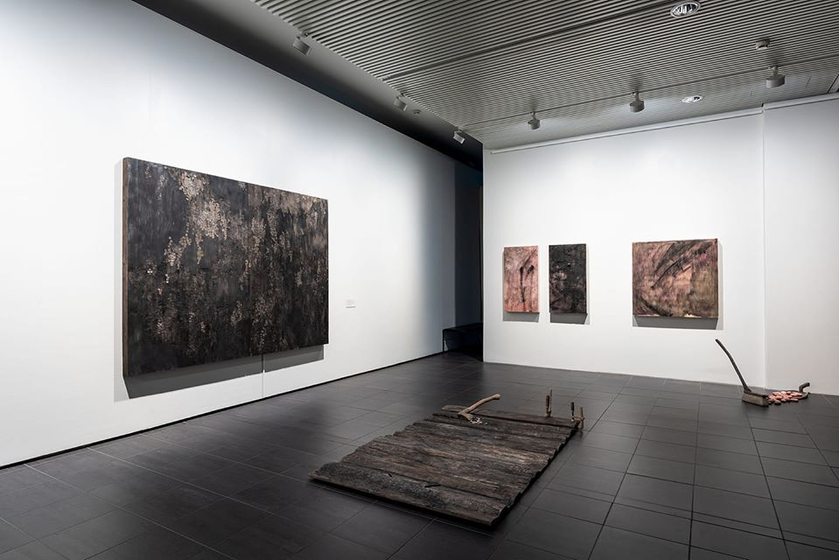Monere mens
≈≈≈≈≈≈≈
Monument lat. monumentum, monere (to remember) mens (in mind)
"It's a bit like a negation of a monument", a friend of mine said of our hometown's glacial pothole/giants´s kettle, when I was planning an artwork next to it in 2020. This phrase of my friend’s gave its name to my research plan The Negation of a Monument and the Meanings of a Fissure, when later that year I applied for postgraduate studies at the Academy of Fine Arts, Uniarts Helsinki.
The research leans on my experience as a handcraft-based sculptor and arises directly from my artistic practice with wood. In my artworks, wood is a concrete material and creator of visual appearance, but also part of the work’s conceptual content. Having worked with material processes for more than two decades, the will of wood, the language of wood, and the speech of wood have also become part of my works and research. The main focus is on the intertwining of wood as a material and memory. Mattolaituri (Carpet Pier) is the second artistic part of this research.
Material research methods not only open the phenomena that is being studied, but implicate the artist-researcher as a creative part of the whole (e. g. Iovino and Oppermann 2014, 9; Woodward 2020, 29). They are entangled with their subject, rather than being an outside observer, creating while also attempting to understand and contextualise what they are creating. In my research, the method is a kind of cleaning, where I move among traditions and layers of memory, dismantling and rearranging intergenerational expectations, models, and stories. In addition to cleaning, my methods include carving, chiselling, walking in the landscape, sitting on the pier and art writing.[1]
‘Statues in parks’ are generally considered to be collective memory objects, but very small, intimate, personal, random, and surprisingly mundane objects can also turn out to be memory objects too. Seeing an object from the past on a flea market table can open (or re-open) wounds and bring history to life. In my research, monuments are simply framed as objects that contain memory. Memory and remembrance are a common theme in the field of contemporary art. Instead of monuments that promote national hegemony, artists remember personal events and, for example, deceased relatives. Recycled objects, photographs, remnants and waste have been used as the material and starting points in numerous memory-bound works of contemporary art.
Materials and objects are filled with immaterial meanings, memories, and even magical thinking. Materials, objects, artworks, and experiences intertwine and bring history to life (e. g. Kajander, Koskinen-Koivisto 2021, 357). For example, Finnish sculptor Kaarina Kaikkonen has turned recycled clothes into works of art and said that many of the jackets used in her works have previously had a warm, loving heart beating inside them (Kaikkonen 2014).
In order to share events and experiences, they first need to be articulated in a communicable form. In my research, by using humble material such as wood, and working with my hands, I create memory-bound objects that are not rigid, not set in stone, not bound to nationalism, not legitimizing a sense of national superiority, not institutional, and not put on a pedestal. Instead they are ‘boundary objects’, mediating, connecting and enabling (as gestures) many kinds of understanding and many kinds of encounters, including intimate and personal ones. My research wonders whether ‘a negation of monument’ could be a gesture that enables encounters.
[1] In artistic research, writing and its form matter. Art writing doesn't just deal with something but acts as something. Intertwining of form and content is desirable (e.g. Elo et al. 2023, 2).



